





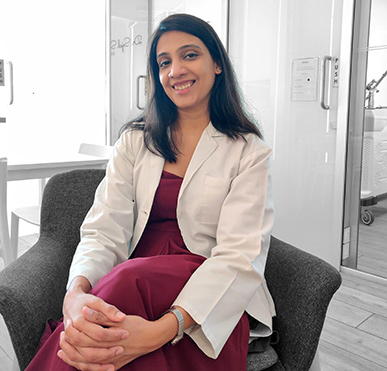
InUrSkn is more than just a skin a hair and body clinic. It is Dr. Sejal's promise of providing minimal intervention patient care which is holistic, personalized and humane.












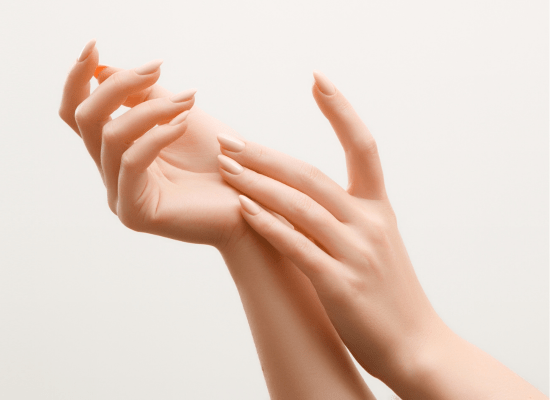
Dry and dull skin is often characterized by a lack of moisture and a rough or flaky texture, which may be accompanied by premature lines and a lacklustre appearance. This condition can arise from environmental factors, or it may be chronic for some individuals. Adequate skincare routine including gentle products and professional dermatological procedures like Iontophoresis or Hydrafacial can significantly improve the skin’s moisture levels and overall appearance.
Read More
Open pores are enlarged facial oil pores that are primarily a result of excessive sebum production and other factors like dirt and aging. They are not only aesthetically unpleasing but also lead to various skin issues like acne. Managing open pores involves a regimen of keeping them clean, promoting cellular turnover, and in some cases, reducing hair growth through the pores, using both at-home skincare routines and professional dermatological procedures.
Read More
Lax or sagging skin occurs due to various factors like reduced hydration, fat levels, and vital proteins like elastin and collagen. Aging, sun exposure, and lifestyle choices like smoking further exacerbate this condition. Though inevitable to some extent, a dedicated skincare routine and professional treatments can significantly improve skin elasticity, helping to combat the sagging and rejuvenate the skin’s appearance.
Read More
Scarring is a natural part of the body’s healing process following an injury, where the skin repairs itself by forming collagen and elastin fibers. However, this repair often leaves behind scar tissue that has a different texture and appearance. Various factors like the type of injury, location, and individual’s health determine the scar’s characteristics. Various treatments like Microneedling and Chemical Peels can be effective in minimizing scar appearance, helping to regain a smoother skin texture.
Read More
Stretch marks, or striae, are linear scars that occur when the skin is rapidly stretched or contracted, leading to damaged connective tissues and alterations in collagen and elastin fibers. Initially red or pink, they fade to a white or silvery appearance over time. Common during pregnancy, puberty, or significant weight changes, these marks often appear on the abdomen, thighs, upper arms, or back. Treatments like Microneedling and CO2 Fractional Laser Skin Resurfacing can aid in improving the skin’s texture by promoting collagen and elastin remodeling.
Read More
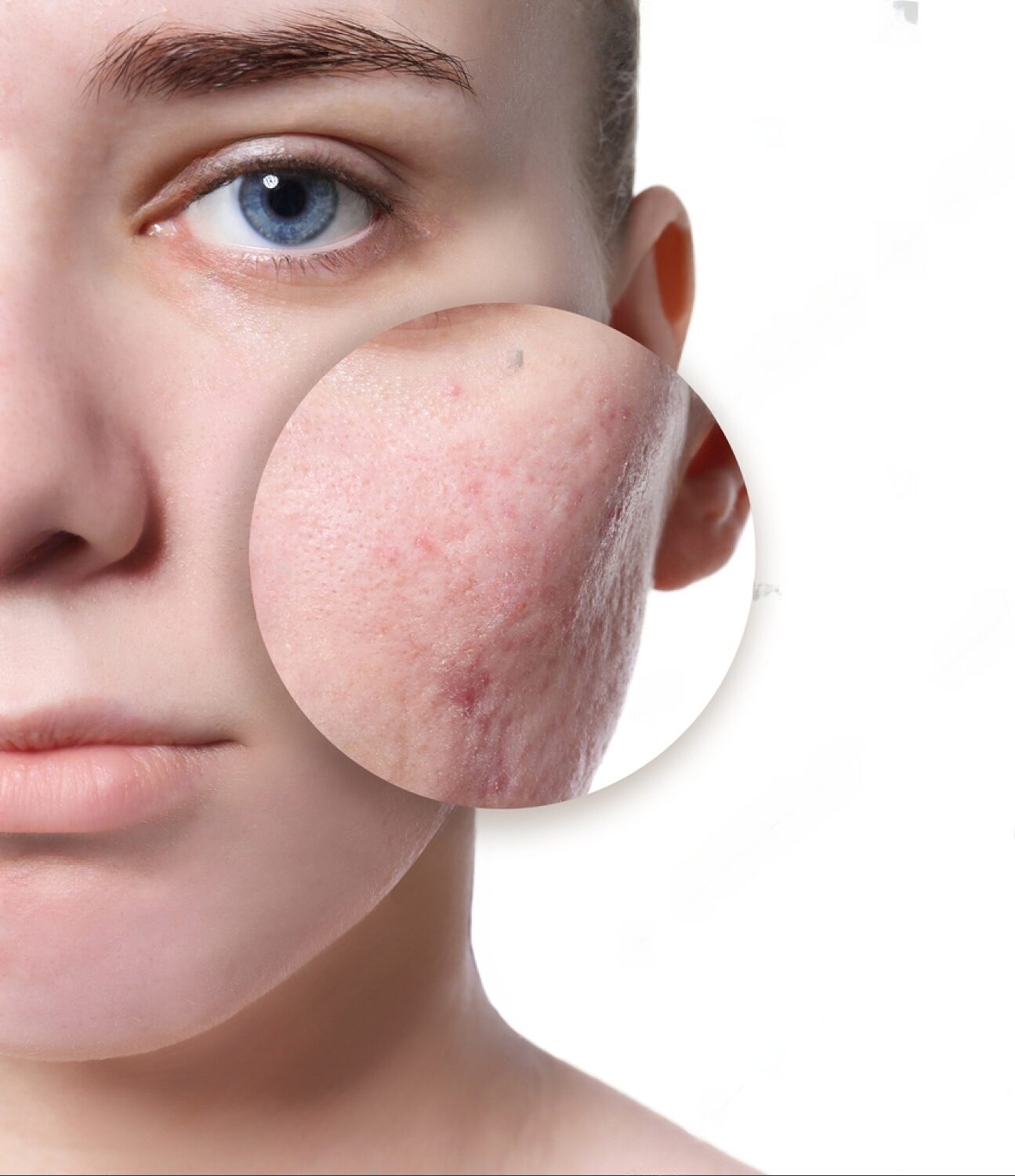
Skin texture in general is the result of how well skin has been cared for over years. Things like environmental exposure to sun and pollution and lifestyle choices like smoking, unhealthy diet, lack of exercise etc. all adversely affect the health of your skin.
In addition, any form of trauma to the skin like skin infections or accidents can damage the skin substantially.
Lastly and most importantly the performance or health of the skin is heavily influenced by genetics and constitution.
Skin Rejuvenation procedures all aim to correct defects and problems caused on the skin because of above factors.
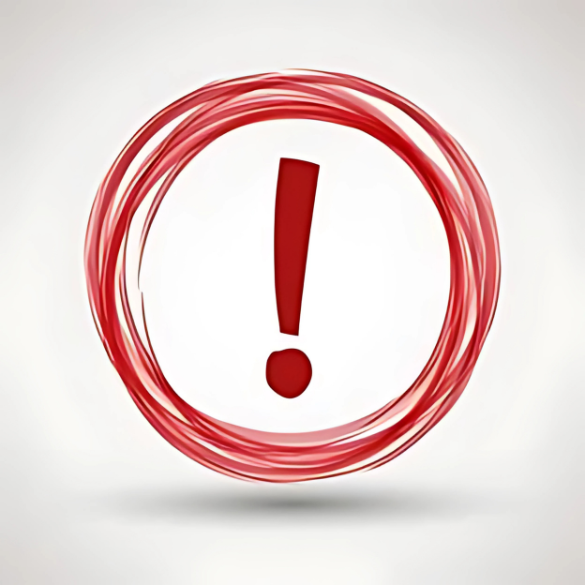
Below are some general guidelines to help maintain good skin texture and elasticity over a period of time:
– Effects of sun exposure and even pollution are best minimized by use of sunscreens
– One should actively works towards improving their skin and overall health by getting adequate exercise, sleep and relaxation.
– One should also avoid damages to their health due to dietary choices or due to engaging in activities like smoking and drinking.
– Establishing a proper daytime and night time skin care routine with the help of your dermatologist which includes but is not limited to hydration, collagen generation and control of melanin formation can help substantially.
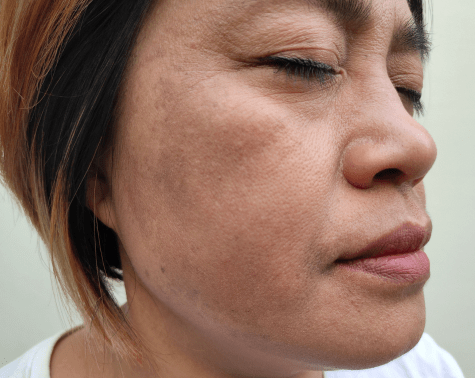
While most of us feel that our skin may turn dry temporarily because of exposure to dry weather or dry air of air conditioning, some patients suffer from almost chronically dry skin. This is best described as below:
– Dry and parched looking skin
– Brittle and lustreless appearance of the skin
– Visible rough patches and flakiness
– Premature lines and wrinkles on the skin, which look more pronounced on dry skin
– Taut, stretched and itchy skin
Caring for such skin needs to have more than just a good moisturizer. One must consider the below things:
– Use Gentle Skin care Products (avoid dehydrating ingredients in the skin care products like vitamin c derivatives and retinoids)
– Moisturize with a product that not only improves the barrier function of the skin, but also helps moisturize the deeper layers of the skin.
– Do not exfoliate your skin without the consent of a dermatologist
– Use lukewarm water for bathing and cleaning
– Protect yourself from the sun by using sunscreen and clothes and accessories to cover yourself.
– Avoid any spa or salon treatments on your skin.
– Avoid consumption of coffee, alcohol etc. which dehydrate you.
– Keep yourself hydrated through the day
The procedures that work best to moisturize and revitalize the skin are as below:
1. Ionization Therapy (Iontophoresis)
2. Hydrafacial
3. Dermal Fillers
4. HA Injections
5. Custom Medical Facials
Contributing factors can include environmental elements, inadequate hydration, harsh skincare products, or certain medical conditions.
Dry and dull skin can accentuate the appearance of wrinkles and fine lines, making individuals appear older.
Symptoms include flaky texture, itching, rough patches, and a taut or stretched appearance.
Utilizing gentle skincare products, moisturizing regularly, and avoiding dehydrating substances like alcohol can be beneficial.
Treatments like Hydrafacial, ionization therapy, and dermal fillers can help restore moisture and vitality to the skin.
It’s essential to moisturize at least twice daily or as advised by a dermatologist to maintain hydration.
Exfoliation can remove dead skin cells but should be done cautiously under professional guidance to avoid further dryness or irritation.
Consuming a balanced diet rich in antioxidants, vitamins, and staying hydrated can support skin health.
Yes, sun exposure can exacerbate dryness and cause further dullness. It’s crucial to use sunscreen and protective clothing.
Products with harsh chemicals, alcohol, or dehydrating ingredients like certain Vitamin C derivatives and retinoids should be avoided.
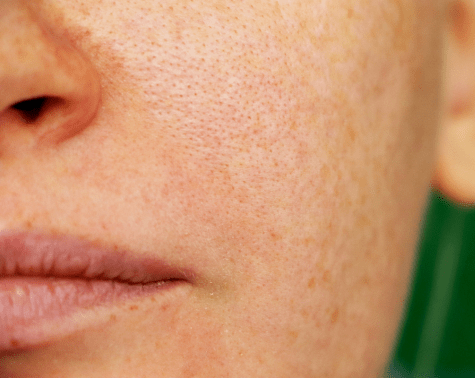
Pores are nothing but the openings of ducts on the surface of the skin. There are two types of pores on the body.
The first ones are responsible for carrying the oil or the sebum to the surface of the skin. Sebum is nothing but a fluid produced by your skin consisting of mainly lipids (fats) and proteins. These pores are present all over your body except on your palms and soles.
The second type of pores are the ones which allow you to sweat. These are present all over your body.
When people talk about enlarged or open pores they generally refer to the oil pores. These oil pores also carry the hair follicles.
Normal functioning of sebaceous pores is to discharge the sebum on the surface of the skin and keep the skin moisturized. However when these pores malfunction they tend to get clogged with sebum (oil), dirt and dead skin cells leading to large pores or enlarged pores or open pores as they are called.
The best mechanisms to help reduce the size of the pores consists of the following three strategies:
a. By keeping the pores clean and non clogged
b. By enhancing cellular turnover and hence causing the skin to firm up and contract.
c. By reducing hair growth through the pores
In addition to the aesthetic appearance of looking enlarged or open blocked pores are also responsible for almost all acne issues like whiteheads, blackheads, milia etc. Ensuring that the skin is correctly (gently) exfoliated and cleaned is very essential to good skin hygiene.
The best way to keep a check on the size of your pores at home is as below:
1. Clean your face at least twice a day with a gentle cleanser.
2. Enhance cellular turnover with use of skin care products that have ingredients like retinoids (retinol) or mild AHA and BHA (alpha and beta hydroxy acids).
3. Protect your skin from any form of damage because of sun exposure or acne etc.
4. Moisturize the skin regularly.
To keep the pores clean the below procedures are very effective:
1. Skin Polishing (Microdermabrasion)
2. Medical Skin Cleanup
To increase cellular turnover and tighten your skin:
1. Microneedling (Skin Resurfacing)
2. CO2 Fractional Laser Skin Resurfacing
3. HIFU (High Intensity Focused Ultrasound)
4. PRP Facial (PRP Facial)
5. Chemical Peels
To reduce hair growth permanently:
1. Laser Hair Removal
Excessive sebum production, accumulation of dirt, and aging can lead to open pores.
Open pores can get clogged with sebum, dirt, and dead skin cells, leading to whiteheads, blackheads, and other acne forms.
Regular cleansing, using retinoids or mild AHA and BHA, sun protection, and moisturizing can help manage open pores.
Treatments like Microdermabrasion, CO2 Fractional Laser, and Chemical Peels can help reduce the size and appearance of open pores.
With consistent care and professional treatments, it’s possible to significantly reduce the appearance of open pores.
Hair follicles reside in oil pores; excessive hair growth can enlarge pores and may require laser hair removal for management.
Oily and combination skin types are usually more prone to experiencing open pores due to higher sebum production.
Yes, sun damage can lead to loss of skin elasticity, making open pores appear more pronounced.
Gentle exfoliation can remove dead skin cells and excess oil, preventing pore clogging, but should be done cautiously.
Avoiding skin-irritating substances like alcohol, and harsh chemicals can prevent further enlargement of pores.
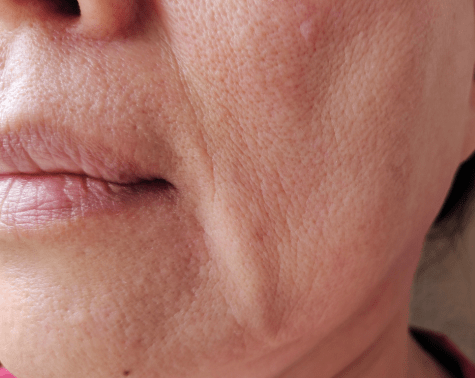
Sagging or skin is a complex phenomenon that has multiple factors at work. Some of these include:
a. Reduction in the hydration levels (moisture) in the skin.
b. Reduction in levels of fat under the skin as we age or as we lose weight.
c. Shifting of fat pads under the skin as we age or lose weight.
d. Reduction in bone density and the associated bone loss.
e. Reduction in Levels of Elastin and Collagen, the fundamental proteins that form the structure of the skin.
While a lot of the above factors are inevitable with ageing, these fatcors get aggravated by certain aspects like:
a. Premature Ageing of skin caused by cummulative effects of sun exposure over a period of time.
b. Premature ageing of skin caused by smoking and consuming oxidative food products like tea, coffee etc.
c. Bone density loss caused by reduced calcium levels
d. Constant exposure to pollution, dust and other environmental factors like dry cold weather or airconditioning.
e. Constant exposure of the skin to hot water during bathing etc.
A healthy at home skin care routine can go a long way in helping maintain the elasticity of the skin. Your skin care routine should ensure the following:
1. Effective hydration of the skin with a great moisturizer.
2. Protection from Sun Damage with sunscreen and physical protection.
3. Stimulation of New Skin Cell generation using ingredients like retinoids, AHA, BHA etc.
In addition you should pay attention to your diet such as increasing antioxidants in your diet and also reduce skin damaging activities such as smoking.
The most effective procedures to help improve skin elasticity are:
1. Microneedling (Skin Resurfacing)
2. CO2 Fractional Laser Skin Resurfacing
3. HIFU (High Intensity Focused Ultrasound)
4. PRP Facial (PRP Facial)
5. Chemical Peels
6. Skin Polishing (Microdermabrasion)
7. Hydrafacial
8. HA Injections
9. Dermal Fillers
10. BTX
Aging, sun damage, and lifestyle factors like smoking and poor nutrition contribute to the reduction of elastin and collagen.
The loss of fat diminishes the skin’s support structure, leading to a saggy appearance.
Yes, a nutritious diet rich in antioxidants can support skin health and mitigate sagging.
Ingredients like retinoids, AHA, BHA, and hyaluronic acid can promote skin elasticity and hydration.
Sun exposure causes premature aging, reducing skin’s elasticity and leading to sagging.
Treatments like Microneedling, CO2 Fractional Laser Resurfacing, and HIFU are effective in improving skin elasticity.
Smoking accelerates skin aging by reducing blood supply and nutrients to the skin, leading to sagging.
Yes, by maintaining a healthy lifestyle, sun protection, and a diligent skincare routine, the onset can be delayed.
Bone density loss reduces the structural support, causing the skin to sag and wrinkle.
Hydrafacial cleanses, exfoliates, and infuses skin with intensive serums, improving hydration and elasticity.
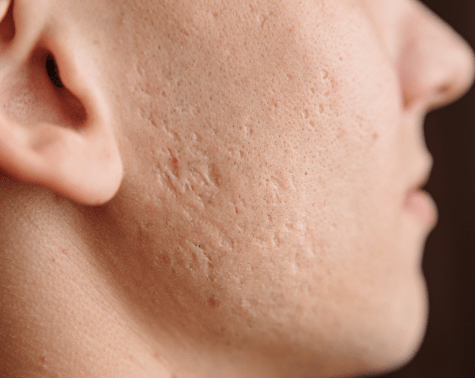
When you injure your skin, the body reacts to it by initiating an inflammation response to the injury which first contains the injury and then starts the tissue repair process. During the tissue repair phase there is a proliferation of cells from the adjoining areas to the injured area and the wound is closed with the formation of collagen and elastin fibres. Collagen and Elastin are proteins which are the basic building blocks of all tissue, skin, bones, etc.
However as the skin and tissue heal, often the healed area becomes uneven and has a different texture and quality because of the nature of the injury. And hence we get what is called as scar tissue.
When a scar first develops on lighter skin, it’s usually pink or red. Over time, the pinkish colour fades, and the scar becomes slightly darker or lighter than the colour of the skin. In people with dark skin, scars often appear as dark spots.
The appearance of a scar depends on several factors such as:
– Injury or event that caused the scar, such as surgery, a burn or severe acne.
– Size, severity and location of the wound.
– Treatment you received for the wound, such as stitches or bandages.
– Your age, genes, ethnicity and overall health.
There are various types of scars based on their structure. These are:
Depressed (atrophic) Scars
Contracture Scars
Flat Scars
Keloidal Scars
Raised (Hypertrophic) Scars
In addition to topical medications, the below procedures may be useful to help you with treatment of scars:
1. Microneedling (Skin Resurfacing)
2.Chemical Peels
3. Microdermabrasion (Skin Polishing)
4. PRP Facial (PRP Facial)
5. CO2 Fractional Laser Skin Resurfacing
The body’s inflammatory response to injury initiates the tissue repair process, leading to scar tissue formation.
Scar tissue is often uneven, with a different texture due to the nature of the injury and healing process.
Factors include the injury’s cause, size, location, wound treatment, and the individual’s age, genetics, and health.
Depressed scars are sunken, while raised scars are elevated above the skin surface.
The color change is part of the healing process where initially, scars may be red or pink and later fade or darken.
Yes, areas with more movement or tension, like joints, often experience more pronounced scarring.
Treatments like Microneedling, Chemical Peels, Microdermabrasion, and CO2 Fractional Laser Skin Resurfacing are effective.
Yes, genes and ethnicity can affect how an individual scars and the scar’s appearance.
Keloidal scars extend beyond the injury site, with a raised, smooth top and pink or purple color.
Yes, prompt wound cleaning, proper bandaging, and avoiding sun exposure can minimize scarring.
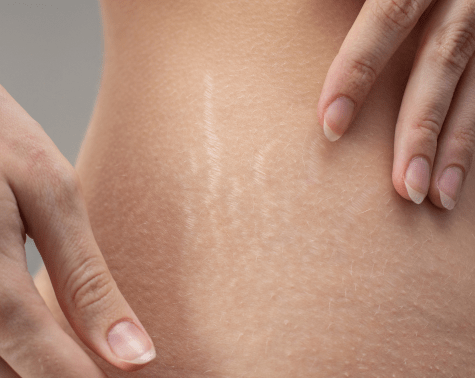
Stretch marks are generally formed when skin expands or shrinks quickly. In this case the connective tissues under the skin can be damaged and also there are changes in the collagen and elastin fibres. Stretch marks generally present themselves like lines or striae, where the skin seems to have been ‘stretched’.
In their early stages of formation, stretch marks are reddish in appearance and as they mature and settle down, they tend to become whitish in appearance.
Stretch marks commonly develop during pregnancy, puberty or after gaining or losing a lot of weight. They can also be caused during certain conditions like cushing’s syndrome etc. They usually appear on the stomach, thighs, upper arms or back.
Stretch marks are best handled by procedures that remodel the collagen and elastin in the skin. The best way to do is to carry out a controlled injury of the skin using certain skin resurfacing techniques. When this controlled injury heals it causes two primary effects:
1. It activates the collagen and elastin formation process in the skin. Collagen and Elastin are the basic proteins which hold the skin cells together and are instrumental in the form the skin takes.
2. This process also leads to neo-vascularization, that is formation of new blood vessels, leading to a much better blood flow and hence healthier skin.
Because of the above two effects when the skin heals, there is a substantial improvement in its texture and in case of any abnormalities like scars and stretch marks the healed skin starts resembling the adjoining area rather than have a different texture or structure.
Stretch Marks are best resolved using procedures which help in collagen and elastin remodelling. these include:
1. Microneedling (Skin Resurfacing)
2. CO2 Fractional Laser Skin Resurfacing
3. PRP Treatment with Microneedling
Rapid skin stretching or contraction, leading to damaged connective tissues and altered collagen and elastin fibers.
Initially, the marks are red or pink due to active inflammation, but fade to white or silver as they mature.
It’s challenging to prevent stretch marks completely, but maintaining a healthy weight and moisturizing can help.
The rapid skin expansion in pregnancy, especially on the abdomen, often leads to stretch mark formation.
Collagen and elastin are proteins that maintain skin elasticity. Their alteration leads to the formation of stretch marks.
These areas are prone to rapid expansion or contraction, making them susceptible to stretch mark formation.
Microneedling promotes collagen and elastin remodeling by creating controlled skin injury, improving skin texture.
Some creams containing retinoids may help to some extent by promoting collagen production, but results vary.
This treatment creates tiny “microthermal” zones to stimulate collagen production and skin regeneration.
Yes, maintaining a healthy weight can prevent rapid skin stretching, thus reducing the risk of stretch mark formation.

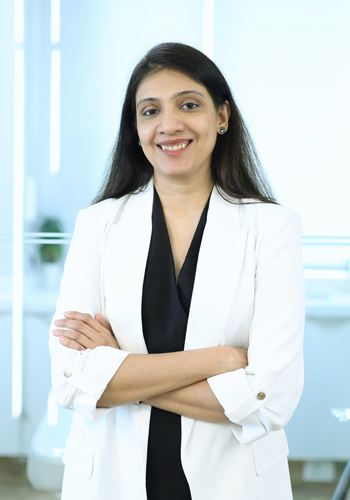
MD, DNB - Dermatology & Venereology
Dr. Sejal has dual degrees of MD and DNB in Dermatology and Venereology. She has worked with some of the senior most doctors in the largest government and private hospitals for more than 15 years. Over these years at InUrSKn, she has treated thousands of patients for a variety of conditions and needs across dermatology, venereology, cosmetology and trichology domains.
Dr. Sejal believes in a minimum intervention approach to health and believes that educating and empowering the patient is the key to good health.
Every patient at InUrSkn is seen personally by Dr. Sejal without any time limit, where she discusses the patient’s concern in detail along with understanding the history of their health and carrying out a personal examination.
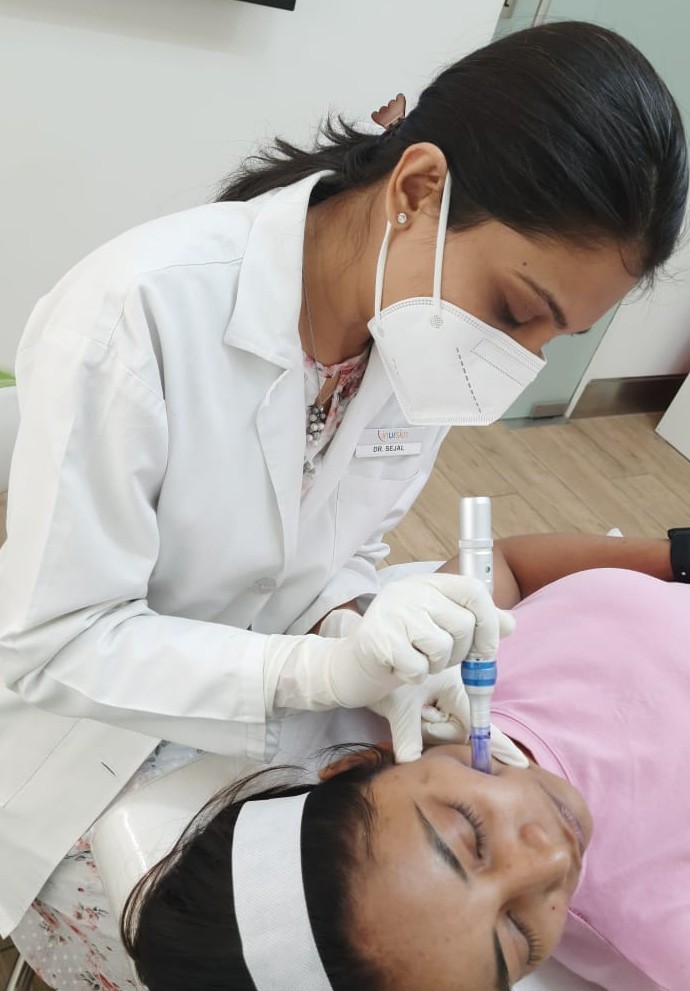
Treatment of concerns relating to texture and elasticity of skin requires an intimate understanding of the functioning of skin as well as the latest treatments available to improve the health of the skin.
Dr. Sejal’s approach to any form of skin rejuvenation includes the following:
1. Identification of the root cause of the issue based on patient history and in person examination of the condition of the skin.
2. Helping patients establish simple at home skin care routines that address their specific concerns.
3. Prescribing any oral or topical medications that may be needed.
4. Advising the right combination of skin care procedures that can help patients achieve the skin health they desire.
Multiple spacious procedure rooms
Full-fledged operation theatre
In-house laboratory
Latest technology
100+ Skin, Hair & Body Procedures offered
Frequent disinfection of all clinic spaces with UVC light and WHO-approved chemicals
Large waiting and treatment areas to ensure social distancing
Regular health checks for all patients and staff
Safer than salons, chain-clinics & hospitals
PPEs for patients and staff
Personal attention from Dr. Sejal Saheta (MD, DNB) - with 15+ years of experience
CIDESCO-certified aestheticians with minimum 3 years work experience
500+ Positive Reviews on Practo and Google
5000+ Patients treated last year alone
8000+ Procedures completed
| Prices | ||
|---|---|---|
| Procedure | ||
| In Clinic Consultation with Dr. Sejal | ||
| In Clinic Consultation with Dr. Sejal | ₹1100 | |
| Online Consultation with Dr. Sejal | ||
| Online Consultation with Dr. Sejal | ₹900 | |
Pricing (Inclusive of taxes)


Various factors like aging, sun exposure, pollution, lifestyle choices (smoking, diet, etc.), and genetics play a role in skin texture and elasticity.
Dehydration can make the skin look more dry and rough. A lack of moisture can also highlight fine lines and wrinkles.
Collagen provides structure while elastin allows the skin to return to its original shape, maintaining smoothness and firmness.
Regular moisturizing, exfoliation, sun protection, a balanced diet, and staying hydrated can help maintain and improve skin texture and elasticity.
Yes, treatments like laser therapy, microneedling, chemical peels, and dermal fillers can help improve skin texture and elasticity.
UV radiation can break down collagen and elastin fibers, leading to prematurely aged, sagged, and wrinkled skin.
Yes, topical antioxidants can combat free radical damage, promote collagen production, and improve overall skin texture and elasticity.
Retinoids promote collagen production and cell turnover, which can improve skin elasticity and texture.
Yes, regular exercise can enhance blood circulation, promoting a healthy complexion and potentially improving skin elasticity.
Smoking accelerates the natural aging process by reducing blood flow and collagen production, leading to poorer skin texture and elasticity.
A balanced diet rich in antioxidants, vitamins, and minerals can support skin health, texture, and elasticity.
Alcohol can dehydrate the skin, potentially leading to a rough texture and an increase in wrinkles and fine lines.
Yes, hormonal changes, especially during menopause or pregnancy, can affect skin texture and elasticity.
Changes can be identified by increased dryness, dullness, fine lines, wrinkles, sagging, and the appearance of enlarged pores or rough texture.
While some changes are inevitable due to aging, professional treatments and a good skincare routine can significantly improve skin texture and elasticity.


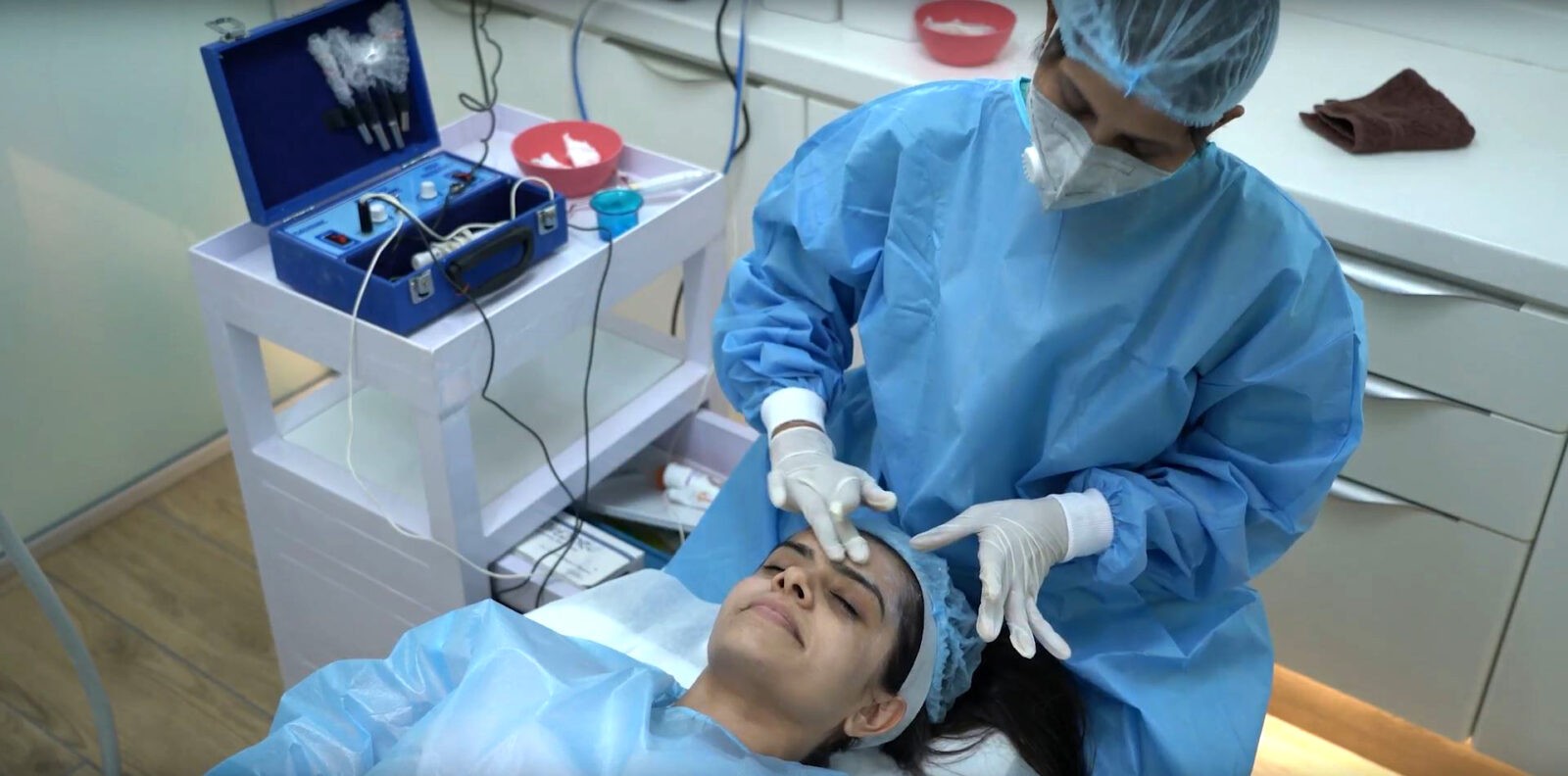
Ready to book an appointment?
BOOK
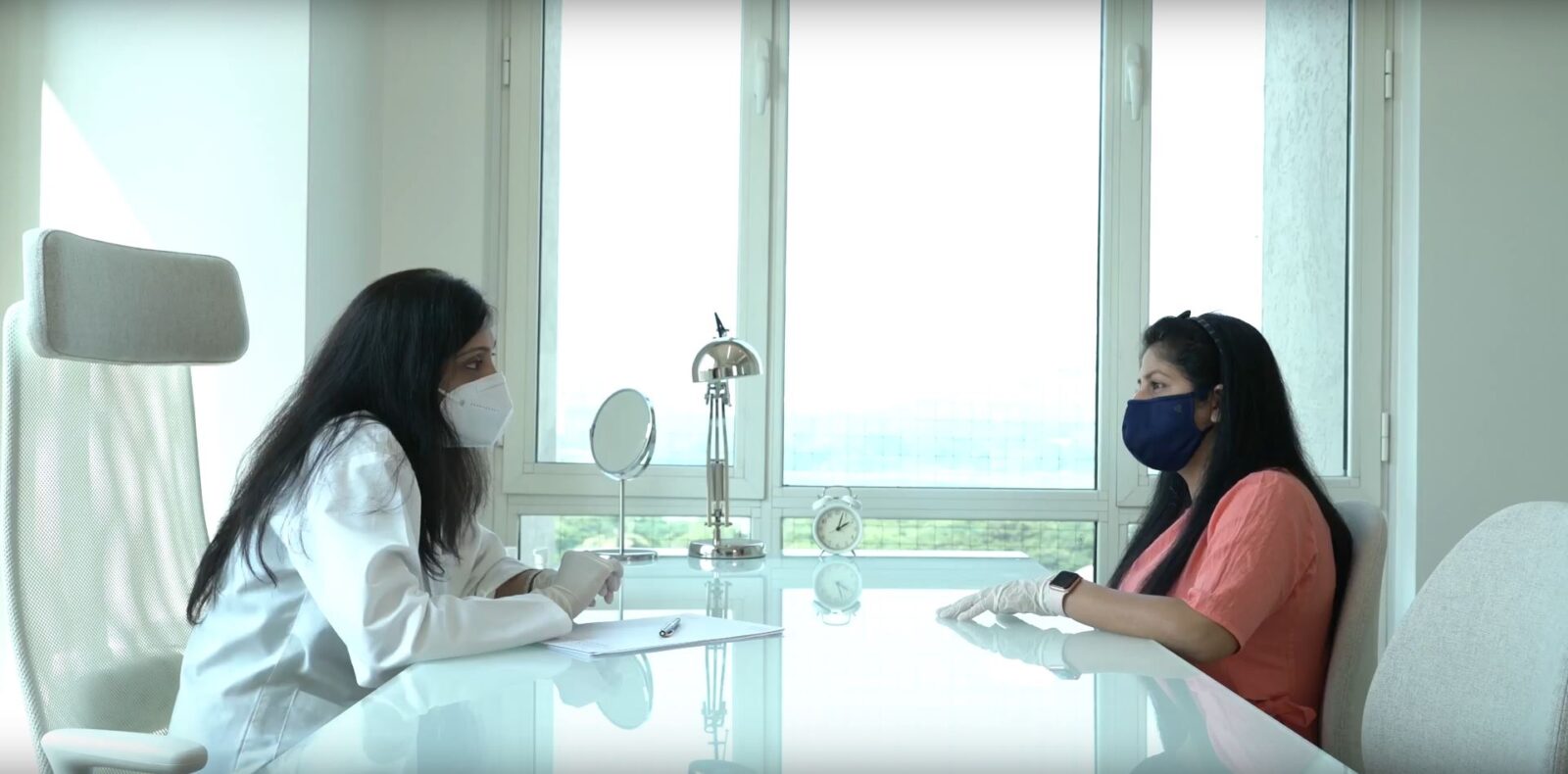
Want to talk about your needs ?
MAKE AN enquiry
